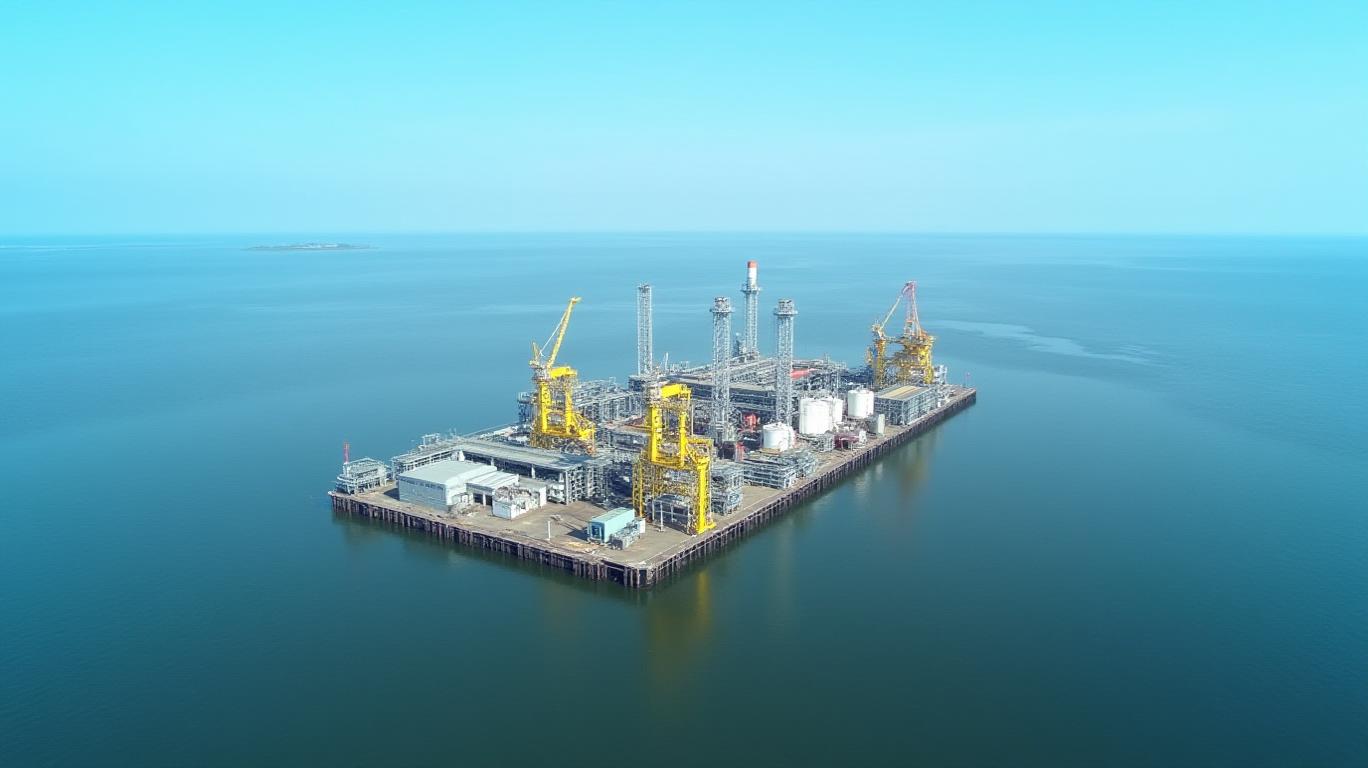Edison's LNG Pivot: Prudent Diversification or a Gamble in Volatile Waters?
In the high-stakes arena of global energy markets,
SpA's push to secure U.S. LNG contracts post-2028 represents both a bold strategic move and a calculated risk. As the company navigates ongoing disputes with Venture Global—a saga marked by delayed deliveries and arbitration—its pivot to U.S. liquefied natural gas (LNG) suppliers underscores a critical question: Is this a shrewd play to diversify supply chains and mitigate contractual risks, or a gamble in an increasingly volatile market?The Risks of Long-Term LNG Contracts: Lessons from Venture Global
Edison's 20-year contract with Venture Global, signed in 2017, promised 1.4 billion cubic meters of LNG annually. Yet delays stemming from technical failures at Venture Global's Louisiana facility have left Edison scrambling to fill gaps in its supply chain. The repercussions are stark: forced reliance on volatile spot markets, where prices surged due to geopolitical disruptions (e.g., Russia's invasion of Ukraine), eroding margins.
The Venture Global dispute highlights a systemic risk: long-term LNG contracts, while offering price stability, are vulnerable to operational failures, market volatility, and opportunistic supplier behavior. Venture Global's prioritization of lucrative spot sales over contractual obligations—a $20 billion revenue windfall—exposes a flaw in the LNG market's reliance on good-faith execution. For investors, this raises red flags about the enforceability of long-term agreements in turbulent markets.
Strategic Benefits: Diversification vs. Contractual Breach Precedents
Edison's turn to U.S. LNG suppliers post-2028 reflects a clear strategy to reduce reliance on European gas and stabilize supply chains. The U.S. LNG market, projected to hit 25.2 billion cubic feet per day by 2028, offers scale and growth. Projects like Venture Global's Plaquemines facility and Cheniere's Corpus Christi Stage 3 promise reliable volumes, while midstream infrastructure (e.g., Kinder Morgan's Trident Pipeline) ensures logistical resilience.

However, the Venture Global saga casts a shadow. The arbitration case—now before the London Court of International Arbitration—serves as a cautionary tale. Investors must weigh the benefits of U.S. LNG's growth against the risk of repeat breaches. Edison's response? Stricter contractual terms, including penalties for non-performance and clauses mandating third-party oversight of supplier operations.
Implications for Margin Stability and Renewable Transition Timelines
Edison's margin stability hinges on minimizing spot market exposure. By securing long-term U.S. contracts, the company aims to lock in predictable costs, shielding itself from LNG's price swings. Yet, this strategy's success depends on supplier reliability. If U.S. projects face delays or prioritize spot sales, Edison's margins could again face pressure.
Meanwhile, the renewable transition timeline remains a wildcard. Edison's 2030 plan envisions a 20% market share via a mix of natural gas and green fuels like biomethane. U.S. LNG serves as a “bridge fuel,” offering lower emissions than coal and oil. However, if regulatory scrutiny (e.g., the EU's emissions standards) or market shifts accelerate the phaseout of fossil fuels, Edison's LNG bets could become stranded assets.
The Investment Thesis: Prudent Risk Management or a Risky Gamble?
Case for Optimism:
- Supply Diversification: U.S. LNG reduces reliance on unstable European pipelines and volatile spot markets.
- Market Growth: U.S. exports are expanding, backed by infrastructure and demand from Asia and Europe.
- Contractual Safeguards: Edison's focus on stricter terms could mitigate future breaches.
Case for Caution:
- Operational Risks: U.S. projects face hurdles like labor shortages and regulatory delays.
- Price Volatility: LNG prices remain tied to geopolitical events (e.g., Ukraine, Middle East tensions).
- Renewables Timeline: Overinvestment in gas could clash with faster-than-expected decarbonization.
Actionable Insights for Investors
- Monitor Contractual Compliance: Track Edison's progress with new U.S. suppliers post-2028. A repeat of Venture Global's failures would signal systemic risks.
- Watch LNG Price Trends: If spot prices stabilize, long-term contracts become more attractive. Use tools like to gauge supply-demand dynamics.
- Assess Renewable Integration: Edison's biomethane and hydrogen projects must progress to justify its gas-heavy strategy.
Final Verdict: A Calculated Gamble with Upside Potential
Edison's pivot to U.S. LNG is a strategic necessity in a fractured energy market. While risks abound—from contractual breaches to regulatory headwinds—the diversification gains and scale of U.S. LNG make this a reasonable bet. Investors should take a measured position, but act now: secure exposure before the post-2028 contracts lock in pricing, and capitalize on Edison's dual play of fossil fuels and renewables.
The energy landscape is shifting—investors who align with companies prepared to navigate both risks and rewards will thrive. Edison's move may yet prove to be a masterstroke.

Comments
No comments yet